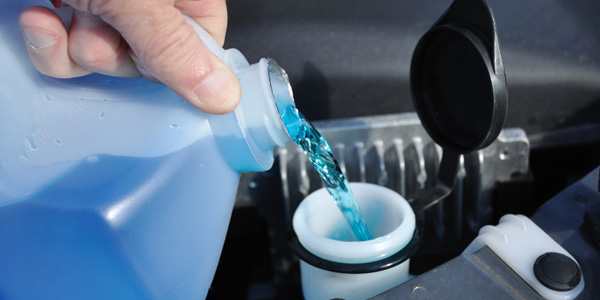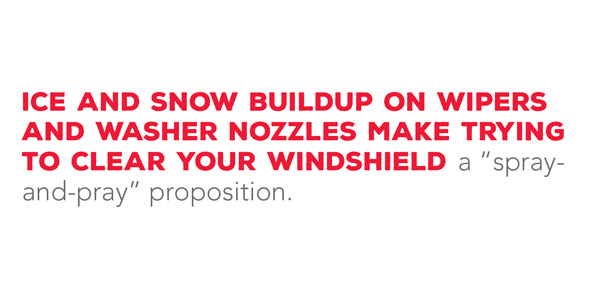
With winter hanging on bitterly before eventually giving way to spring, maintaining good visibility can be difficult. Wiper blades freeze to the windshield, tearing themselves to shreds when the wiper motor starts up, or worse yet, they stay frozen in place while the wiper-arm pivots strip themselves toothless. Ice and snow buildup on wipers and washer nozzles make trying to clear your windshield a “spray-and-pray” proposition. Wet or slushy roads mean increased road spray from tractor trailers and other vehicles ahead of you, and worn blades on thousands of cars just aren’t up to the task of clearing the windshield. Keeping the wiper and washer systems in working order can be a real hassle this time of year.
As a driver, there are few things as disappointing as pressing the windshield washer button and … nothing happens. My daughter brought her car home from college recently, to have a bit of free maintenance performed, do some laundry and raid the refrigerator. While driving her car, I realized she was out of washer fluid. I filled the reservoir, and that’s when my feet started getting wet. She hadn’t neglected to top off the fluid; the reservoir was split at the seams.
Fortunately, the aftermarket offers replacement washer fluid reservoirs for many makes and models (including my daughter’s car), along with washer pumps, nozzles and hoses. After breaking approximately 327 brittle plastic retainer clips and removing several splash shields, I replaced the reservoir and pump and filled it back up. My feet stayed dry this time around.
However, I was a bit puzzled as to why the fluid froze and split the reservoir in the first place. Our house brand blue washer fluid always has been advertised as “protection to minus 20 degrees F,” and with the exception of a clogged nozzle here and there in extremely low temperatures, our customers never have reported an issue with freezing.

I found the answer in the trunk of my daughter’s car. It was an empty jug of “blue water” that she had purchased at a convenience store during a road trip to Virginia. It was labeled “for use above 32 degrees F.” Traditional washer fluids are comprised of a mixture of methanol (alcohol) and water. While the methanol provides excellent anti-freeze and glass-cleaning properties, it also is a volatile organic compound (VOC). The minus-20-degree fluid contains approximately 35 percent alcohol, while the 32-degree fluid only contains about 5 percent alcohol, which severely limits freeze protection but has fewer VOCs.
As of 2010, California has banned the sale of ready-to-use “winter mix” washer solvent in all but a few northern counties, in an effort to reduce VOCs and increase air quality in the state. Much like my daughter’s experience with summer-formula vs. winter-formula washer fluids, some California residents have discovered that the fluid they purchased at their local parts store quickly turned into a block of ice once they made the trip north for their ski vacations. To make matters even more confusing, concentrated washer fluid (the mix-it-yourself variety) is not regulated in California, and may be sold anywhere in the state. It must, however, have a label indicating to the consumer exactly how to dilute the concentrate for both regulated and non-regulated areas of the state.











